Merovingian Dynasty Of Long Haired Kings
David Tee - AncientPages.com - The demise of the Roman Empire left a power vacuum, not just in Italy but also in the Frankish territory in what is now called France.
A strong leader needed to rise and fill that void before the wrong King took over.
Left: Crowning of a Merovingian king. Credit:François-Louis Dejuinne (1786–1844), Public Domain. Right: Tomb of Clovis I at the Basilica of St Denis in Saint-Denis in Paris, France. Credit: Public Domain
In the Merovingian Dynasty, that leader was Clovis I, whose reign may have overlapped the end of the 5th century AD and the beginning of the 6th. But before Clovis could defeat the last Roman army in Gaul, he had to descend from a line of kings who had already started to rule.
The Long Hair Kings
Clovis I was considered the founder of the French state. However, his work was built on those kings who came before.
Unfortunately for him, that history has been lost to time and legend.
Much is said about the great-grandfather, grandfather, and father of Clovis I that has little basis. One example is that the ancestors of Clovis had supernatural power and could heal a person by merely touching them.
These former Frankish kings were also said to grow their hair long. They would lose their power if their hair were cut. Some scholars debate this and wonder if that legend was not added later after the Merovingian line embraced Christianity.
Another long tale that has come down from ancient times is the birth of Merovech, the second Frankish King. He was half-god and half-human as his mother became pregnant with him after a liaison with the god Neptune.
Like Clovis, Childeric Was Real
Because time has a way of losing historical records, little is known about Clovis' grandfather and great-grandfather, Childeric. He was a Merovingian king and true historical figure that led a very debauchery-type lifestyle. His lifestyle got so bad that he was forced off the throne in favor of Aegidius, a Roman dux.
Map of Merovingian kingdoms. Credit: Ridric, Wikipedia, CC BY-SA 3.0
Upon Aegidius' assassination, Childeric was reinstalled as King, which led to his son Clovis assuming the throne after his death.
Merovingian Law
According to the Merovingian Law, the family's father was the head and authority over all other family members. This tradition continued down through the Merovingian line even after they had ascended to be the royal family of the Franks.
Also, the King was in charge of the treasures he obtained through the different battles and wars each King fought. He was the one who made sure the prizes were distributed according to those who were his first followers.
Then on a king's death, his property was divided equally among his heirs. Probably, the dynasty lasted as long as it did, for it was not divided but united in wealth and thought.
Also, the Merovingian law was not universal. It applied accordingly to the status of origin of each family. Then each Merovingian King ensured that tradition was followed and balked at creating new laws.
The Decline Of The Dynasty
As with most dynasties, the weaker rulers tend to lose power over time and lose hold of their kingdom. The Merovingians were no different. In the middle of the 7th century AD, the dynasty's kings were seen as figureheads, while the real power lay with the palace's mayors. When King Theuderic IV died, no king replaced him, and Charles Martell, the mayor of the palace, reigned in his stead. His two sons took over when he died, and no new king ascended the throne.
But because the people were beginning to become suspicious of the growing power of the mayor of the palace, the two sons placed Childeric III on the throne. In 751, Childeric III decided to abdicate and spend the rest of his years in a monastery.
It opened the door for Charles Martell's son, Pepin the Short, to reassume power and end the Merovingian dynasty. The new King considered the Merovingians lazy, incompetent and distorting history.
Updated on June 16, 2022
Written by – David Tee - AncientPages.com Staff Writer
Copyright © AncientPages.com All rights reserved. This material may not be published, broadcast, rewritten or redistributed in whole or part without the express written permission of AncientPages.com
Expand for referencesMore From Ancient Pages
-
 Are Climate-Related Calamities Erasing Illinois’ Cultural History? An Archaeologist Explains
Earth Changes | Dec 27, 2024
Are Climate-Related Calamities Erasing Illinois’ Cultural History? An Archaeologist Explains
Earth Changes | Dec 27, 2024 -
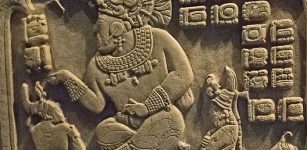 Fall Of The Ancient Maya Civilization Not Caused By Climate Change And Environmental Degradation – Scientists Say
Archaeology | Nov 18, 2021
Fall Of The Ancient Maya Civilization Not Caused By Climate Change And Environmental Degradation – Scientists Say
Archaeology | Nov 18, 2021 -
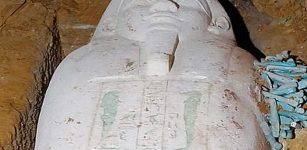 Limestone Sarcophagus, Ushabti Figures Unearthed In Minya’s Al-Gharafa Area, Egypt
Archaeology | Oct 3, 2020
Limestone Sarcophagus, Ushabti Figures Unearthed In Minya’s Al-Gharafa Area, Egypt
Archaeology | Oct 3, 2020 -
 Amazing Archaeological Discovery In A Secret Underground Structure In Transylvania Could Rewrite Ancient History
Featured Stories | Feb 13, 2024
Amazing Archaeological Discovery In A Secret Underground Structure In Transylvania Could Rewrite Ancient History
Featured Stories | Feb 13, 2024 -
 Spread Of Early Farming Across Atlantic Coast Of Europe – In New Light
Archaeology | Apr 27, 2020
Spread Of Early Farming Across Atlantic Coast Of Europe – In New Light
Archaeology | Apr 27, 2020 -
 Hidden Manuscripts Reveal Ancient Sacred Wisdom Of The Gods And Surprises
Ancient Mysteries | Mar 23, 2019
Hidden Manuscripts Reveal Ancient Sacred Wisdom Of The Gods And Surprises
Ancient Mysteries | Mar 23, 2019 -
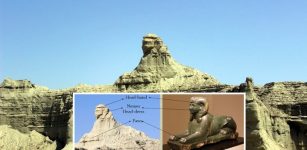 Mysterious Balochistan Sphinx Has An Ancient Story To Tell – But Is An Advanced Ancient Civilization Or Mother Nature Hiding Behind The Story?
Featured Stories | Feb 3, 2018
Mysterious Balochistan Sphinx Has An Ancient Story To Tell – But Is An Advanced Ancient Civilization Or Mother Nature Hiding Behind The Story?
Featured Stories | Feb 3, 2018 -
 ‘Vandal’ Of Norwegian Viking Graves Identified But Charges Have Been Dropped!
Archaeology | Nov 9, 2020
‘Vandal’ Of Norwegian Viking Graves Identified But Charges Have Been Dropped!
Archaeology | Nov 9, 2020 -
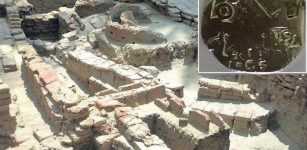 Keeladi Ancient Site Of Tamil Nadu – A Punch-Marked Silver Coin Unearthed
Archaeology | Jul 31, 2021
Keeladi Ancient Site Of Tamil Nadu – A Punch-Marked Silver Coin Unearthed
Archaeology | Jul 31, 2021 -
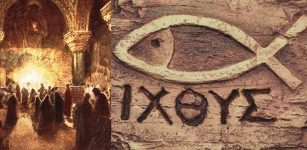 Mysterious Ichthys – Ancient Secret Christian Symbol With A Deep Meaning
Ancient Symbols | Mar 6, 2018
Mysterious Ichthys – Ancient Secret Christian Symbol With A Deep Meaning
Ancient Symbols | Mar 6, 2018 -
 Rare 13,000-Year-Old Artifacts And Paleoindian Camp Uncovered in Connecticut Shed New Light On The First Ancient People In America
Archaeology | Mar 18, 2022
Rare 13,000-Year-Old Artifacts And Paleoindian Camp Uncovered in Connecticut Shed New Light On The First Ancient People In America
Archaeology | Mar 18, 2022 -
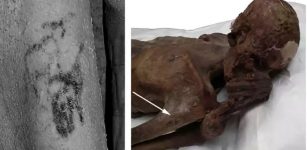 World’s Oldest Tattoos Discovered On Egyptian Mummies Re-Write History Of Tattoos
Archaeology | Mar 2, 2018
World’s Oldest Tattoos Discovered On Egyptian Mummies Re-Write History Of Tattoos
Archaeology | Mar 2, 2018 -
 Ancient Viking Age Music Recreated – This Is What It Sounds Like
Featured Stories | Sep 20, 2020
Ancient Viking Age Music Recreated – This Is What It Sounds Like
Featured Stories | Sep 20, 2020 -
 Unique Structure ‘Wooden Version Of Stonehenge’ – Identified In The Perdigões Complex, Portugal
Archaeology | Aug 6, 2020
Unique Structure ‘Wooden Version Of Stonehenge’ – Identified In The Perdigões Complex, Portugal
Archaeology | Aug 6, 2020 -
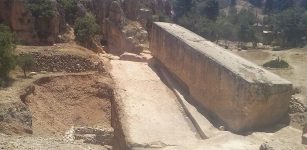 Gigantic Horizontally Lying Stones Of Ancient City Of Baalbek
Civilizations | Mar 10, 2017
Gigantic Horizontally Lying Stones Of Ancient City Of Baalbek
Civilizations | Mar 10, 2017 -
 On This Day In History: First Recorded Passage Of Halley’s Comet Observed By Chinese Astronomers – On Mar 30, 240 BC
News | Mar 30, 2016
On This Day In History: First Recorded Passage Of Halley’s Comet Observed By Chinese Astronomers – On Mar 30, 240 BC
News | Mar 30, 2016 -
 Mystery Of The Ancient Double-Headed Eagle Symbol
Ancient Symbols | Oct 11, 2017
Mystery Of The Ancient Double-Headed Eagle Symbol
Ancient Symbols | Oct 11, 2017 -
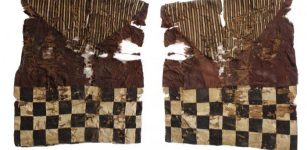 Rare And Well-Preserved Inka Tunic Discovered In Chile
Archaeology | Feb 14, 2023
Rare And Well-Preserved Inka Tunic Discovered In Chile
Archaeology | Feb 14, 2023 -
 Amazon Forest Communities Disappeared Long Before 1492 Arrival Of Europeans
Archaeology | Jun 19, 2019
Amazon Forest Communities Disappeared Long Before 1492 Arrival Of Europeans
Archaeology | Jun 19, 2019 -
 On This Day In History: Grote Reber, Great Amateur Astronomer And Ham Radio Operator Born – On Dec 22, 1911
News | Dec 22, 2016
On This Day In History: Grote Reber, Great Amateur Astronomer And Ham Radio Operator Born – On Dec 22, 1911
News | Dec 22, 2016


